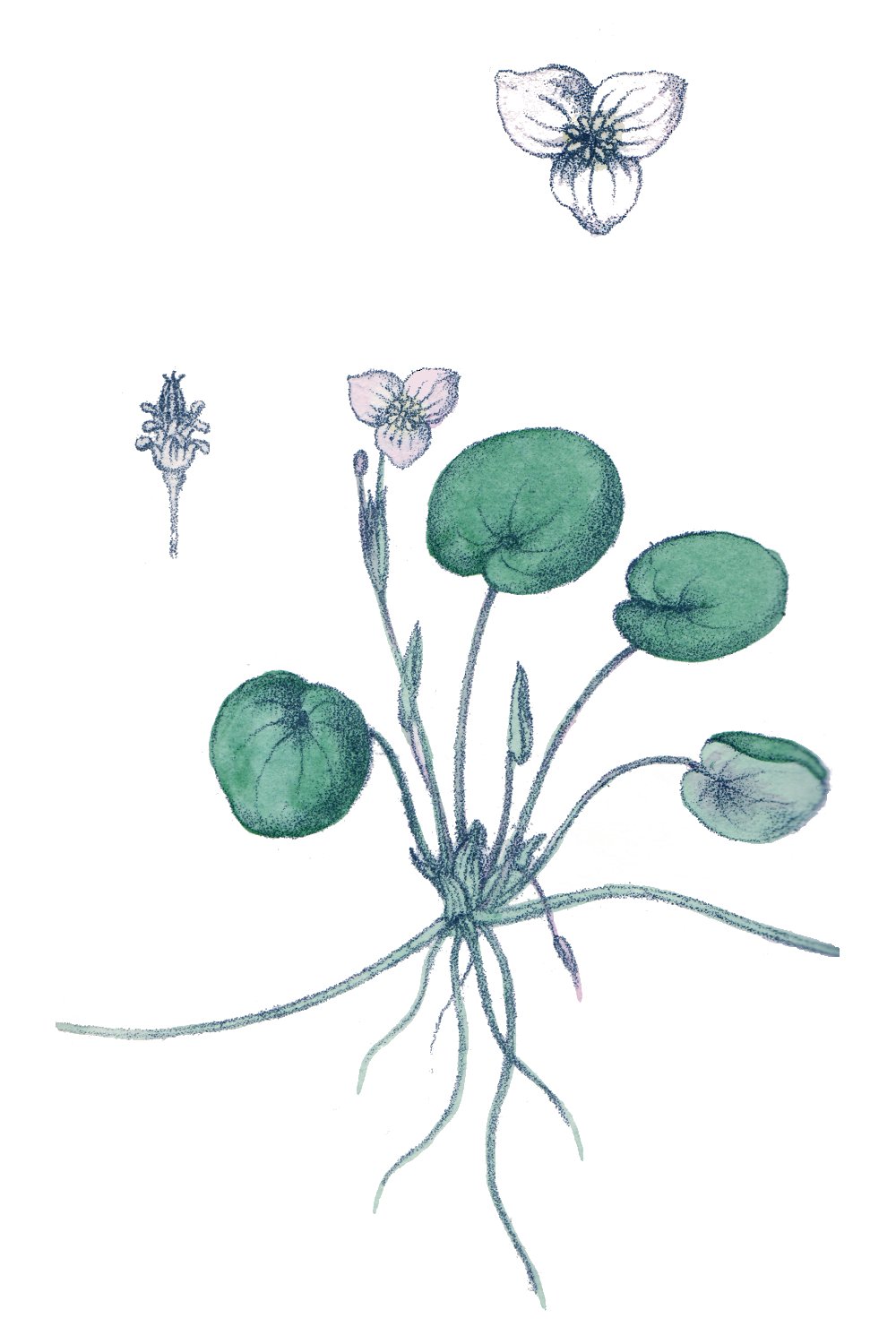- Hydrocharitaceae
Taxobox
name = Hydrocharitaceae

image_width = 200px
image_caption = Common Frogbit
("Hydrocharis morsus-ranae")
regnum =Plant ae
divisio = Magnoliophyta
classis =Liliopsida
ordo =Alismatales
familia =Hydrocharitaceae
subdivision_ranks = Genera
subdivision = See text.Hydrocharitaceae is a plant family that includes a number of species of
aquatic plant , broadly called the Tape-grasses, and includes the well known "Canadian Waterweed" and "Frog's Bit".The family includes both fresh and marine aquatics. They are found throughout the world in a wide variety of habitats, but are primarily tropical.
The species are annual or perennial, with a creeping monopdial rhizome with the
leaves arranged in two vertical rows, or an erect main shoot withroot s at the base and spirally arranged or whorledleaves . Theleaves are simple and usually found submerged, though they may be found floating or partially emerse. As with many aquatics they can be very variable in shape - from linear to orbicular, with or without a petiole, and with or without a sheathing base.The
flowers are arranged in a forked, spathe-like bract or between two opposite bracts. They are usually irregular, though in some case they may be slightly irregular, and either nisexual or unisexual. The perianth segments are in 1 or 2 series of (2-)3 free segments; the inner series when present are usually showy and petal-like.Stamens 1 - numerous, in 1 or more series; the inner ones sometimes sterile. Pollen is globular and free but in the marine genera ("Thalassia" and "Halophila") - thepollen grains are carried in chains, like strings of beads. ovary is inferior with 2 - 15 united carpels containing a single locule with numerous ovules on parietal placentas which either protrude nearly to the centre of the ovary or are incompletely developed.Fruits are globular to linear, dry or pulpy, dehiscent or more usually indehiscent and opening by decay of the pericarp.Seeds are normally numerous with straight embryos and no endosperm.Pollination can be extremely specialised.
Some botanists divide this family into three sub-families - Hydrocharitoideae, Thalassoideae ("Thalassia") and Halophiloideae ("Halophila").
Uses
Some species have become established ornamental plants, and subsequently serious weeds in the wild (such as "Elodea").
Genera
*"
Apalanthe "
*"Appertiella "
*"Blyxa "
*"Egeria"
*"Elodea "
*"Enhalus "
*"Halophila "
*"Hydrilla "
*"Hydrocharis "
*"Lagarosiphon "
*"Limnobium "
*"Maidenia "
*"Najas "
*"Nechamandra "
*"Ottelia "
*"Stratiotes "
*"Thalassia "
*"Vallisneria "
Wikimedia Foundation. 2010.
